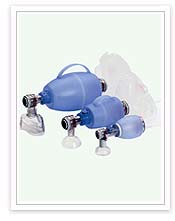
- EQUIPO MÉDICO PARA HOSPITALES
- Cardiología
- C.E.Y.E
- Instumental Medico
- Cuidados Intensivos
- Emergencias
- Ginecologia y Obstetricia
- Hospitalización
- Imagen
- Neonatología
- Quirófanos
- Recuperación
- Sillas y Bancos de Regadera
- Ventiladores de Terapia Intensiva
- EQUIPO MÉDICO PARA PACIENTES
- Accesorios para Baño
- Articulos Para Consultorio
- Auxiliares para Caminar
- Andadores
- Bastones
- Bastón con Asiento
- Bastón con Correa de Un Apoyo
- Bastón de 4 apoyos con base de plástico
- Bastón de Cuatro Apoyos con Base Ancha de Acero Cromado
- Bastón de Cuatro Apoyos con Base Angosta de Acero Cromado
- Bastón de Cuatro Apoyos con Base Angosta de Acero Cromado
- Bastón de Invidente Plegable
- Bastón de Madera
- Bastón de Madera Un Apoyo
- Muletas
- Bancos
- Básculas
- Accesorios
- Digitales
- Báscula Clínica Digital de baterías con Altímetro
- Báscula Digital Nivel de Ojo
- Báscula Digital para Silla de Ruedas Plegable
- Báscula digital pediátrica de baterias
- Báscula Digital Portátil
- Báscula Digital Uso Medico (Altura de la cintura)
- Báscula Pesa Bebés
- Báscula Pesa Bebés Digital
- Básculas Pesa Bebés Digital
- Manuales
- Báscula clínica mecánica con altímetro
- Báscula Mecánica Adulto
- Báscula Mecánica Adulto con Barra de Estatura
- Báscula Mecánica Con Barra de Estatura y Ruedas
- Báscula Mecánica Con Barra de Estatura y Ruedas
- Báscula Mecánica de Doble Lectura de Peso
- Báscula Mecánica de Doble Lectura de Peso y Barra de Estatura
- Báscula Mecánica de Doble Lectura de Peso, barra de estatura y soporte de manos
- Báscula Mecánica de doble lectura y ruedas
- Baumanómetro
- Biombo
- Buros
- Camas Tipo Hospital
- Carros De Emergencia
- Equipos de Rehabilitación
- Esterilizadores
- Estetoscopios
- Estetoscopio Cápsula Doble Adulto
- Estetoscopio Cápsula Doble Adulto "Acero Inoxidable"
- Estetoscopio Cápsula Doble Neonatal "Acero Inoxidable"
- Estetoscopio Cápsula Doble Pediátrico
- Estetoscopio Cápsula Doble Pediátrico "Acero Inoxidable"
- Estetoscopio Cápsula Sencilla Adulto
- Estetoscopio Cápsula Sencilla Pediátrico
- Estetoscopio de Pinard
- Estetoscopio Rappaport
- Gruas para paciente
- Lámparas Clinicas
- Línea Pediátrica
- Mesa de Exploracion
- Mesas
- Ortopedia Blanda
- Oximetros
- Porta Suero
- Recipientes de Acero Inoxidable
- Sillas de Ruedas
- Silla de Ruedas Cromada con Elevador de Pierna y Llanta Rellena
- Silla de Ruedas Cromada con Piesera Desmontable y Llanta Rellena
- Silla de Ruedas Cromada de Piesera y Brazo Fijo con Llanta Relle
- Silla de Ruedas Cromada Extra Ancha
- Silla de Ruedas Esmaltada con Llanta Neumática
- Silla de Ruedas Esmaltada de Lujo con Asiento de Nylon y Llanta
- Silla de Ruedas Reclinable Cromada
- Silla de Transporte
- Silla de Transporte
- Sillones Clinicos
- Sistemas de calentamiento
- Sistemas de entrenamiento
- Unidad de Criocirugía
- Accesorios Criocirugía
- 90060 N2O Cilindro (sin relleno)
- 901061 Cilindro de CO2 (sin relleno)
- Accu-Shield Spray concentrados en un área limitada (6 conos variada)
- Cesta para Cilindros (20 lb)
- UltraFreeze nitrógeno líquido pulverizador (0,3 litros) con 5 aberturas
- UltraFreeze nitrógeno líquido pulverizador (0,5 litros) con 5 aberturas
- Puntas Criocirugía
- Bolsa de 100 protectores de plástico desechables
- Punta Criocirugía, Flat (T-1900)
- Punta Criocirugía Bevel (T-0524)
- Punta Criocirugía Microderm (T0219)
- Punta Criocirugía T-0219 Cono
- Punta Criocirugía, Bevel (T-0823)
- Punta Criocirugía, 11.7mm HPV Tip (T-1200)
- Punta Criocirugía, 13.5mm HPV Tip (T-1300)
- Punta Criocirugía, 15.0mm HPV Tip (T-1500)
- Accesorios Criocirugía
- Welch Allyn
- Accesorios
- 2.5V Otoscopio de diagnóstico con espéculos
- 7.2v batería recargable
- Accesorios Kleenspec Sigmoidoscopio desechables
- Audiometría AM383/TM286 latiguillos individuales
- Audiometría AM383/TM286 latiguillos individuales
- Audiómetro Manual AM232, para corriente alterna solamente
- AudioScope tres formas de grabación, Welch Allyn
- AudioSpec Speculum ® Pequeño
- AudioSpec Speculum ® Grande
- AudioSpec Speculum ® Mediano
- Accesorios
- EQUIPO MÉDICO PARA DOCTORES
- Accesorios para Baño
- Articulos Para Consultorio
- C.E.Y.E
- Cuidados Intensivos
- Auxiliares para Caminar
- Andadores
- Bastones
- Bastón con Asiento
- Bastón con Correa de Un Apoyo
- Bastón de 4 apoyos con base de plástico
- Bastón de Cuatro Apoyos con Base Ancha de Acero Cromado
- Bastón de Cuatro Apoyos con Base Angosta de Acero Cromado
- Bastón de Cuatro Apoyos con Base Angosta de Acero Cromado
- Bastón de Invidente Plegable
- Bastón de Madera
- Bastón de Madera Un Apoyo
- Muletas
- Bancos
- Básculas
- Accesorios
- Digitales
- Manuales
- Báscula clínica mecánica con altímetro
- Báscula Mecánica Adulto
- Báscula Mecánica Adulto con Barra de Estatura
- Báscula Mecánica Con Barra de Estatura y Ruedas
- Báscula Mecánica Con Barra de Estatura y Ruedas
- Báscula Mecánica de Doble Lectura de Peso
- Báscula Mecánica de Doble Lectura de Peso y Barra de Estatura
- Báscula Mecánica de Doble Lectura de Peso, barra de estatura y soporte de manos
- Báscula Mecánica de doble lectura y ruedas
- Baumanómetro
- Biombo
- Buros
- Camas Tipo Hospital
- Carros De Emergencia
- Equipos de Rehabilitación
- Esterilizadores
- Estetoscopios
- Estetoscopio Cápsula Doble Adulto
- Estetoscopio Cápsula Doble Adulto "Acero Inoxidable"
- Estetoscopio Cápsula Doble Neonatal "Acero Inoxidable"
- Estetoscopio Cápsula Doble Pediátrico
- Estetoscopio Cápsula Doble Pediátrico "Acero Inoxidable"
- Estetoscopio Cápsula Sencilla Adulto
- Estetoscopio Cápsula Sencilla Pediátrico
- Estetoscopio de Pinard
- Estetoscopio Rappaport
- Gruas para paciente
- Lámparas Clinicas
- Línea Pediátrica
- Mesa de Exploracion
- Mesas
- Ortopedia Blanda
- Oximetros
- Porta Suero
- Recipientes de Acero Inoxidable
- Sillas de Ruedas
- Silla de Ruedas Cromada con Elevador de Pierna y Llanta Rellena
- Silla de Ruedas Cromada con Piesera Desmontable y Llanta Rellena
- Silla de Ruedas Cromada de Piesera y Brazo Fijo con Llanta Relle
- Silla de Ruedas Cromada Extra Ancha
- Silla de Ruedas Esmaltada con Llanta Neumática
- Silla de Ruedas Esmaltada de Lujo con Asiento de Nylon y Llanta
- Silla de Ruedas Reclinable Cromada
- Silla de Transporte
- Silla de Transporte
- Sillones Clinicos
- Sistemas de calentamiento
- Sistemas de entrenamiento
- Unidad de Criocirugía
- Accesorios Criocirugía
- 90060 N2O Cilindro (sin relleno)
- 901061 Cilindro de CO2 (sin relleno)
- Accu-Shield Spray concentrados en un área limitada (6 conos variada)
- Cesta para Cilindros (20 lb)
- UltraFreeze nitrógeno líquido pulverizador (0,3 litros) con 5 aberturas
- UltraFreeze nitrógeno líquido pulverizador (0,5 litros) con 5 aberturas
- Puntas Criocirugía
- Bolsa de 100 protectores de plástico desechables
- Punta Criocirugía, Flat (T-1900)
- Punta Criocirugía Bevel (T-0524)
- Punta Criocirugía Microderm (T0219)
- Punta Criocirugía T-0219 Cono
- Punta Criocirugía, Bevel (T-0823)
- Punta Criocirugía, 11.7mm HPV Tip (T-1200)
- Punta Criocirugía, 13.5mm HPV Tip (T-1300)
- Punta Criocirugía, 15.0mm HPV Tip (T-1500)
- Accesorios Criocirugía
- Welch Allyn
- Accesorios
- 2.5V Otoscopio de diagnóstico con espéculos
- 7.2v batería recargable
- Accesorios Kleenspec Sigmoidoscopio desechables
- Audiometría AM383/TM286 latiguillos individuales
- Audiometría AM383/TM286 latiguillos individuales
- Audiómetro Manual AM232, para corriente alterna solamente
- AudioScope tres formas de grabación, Welch Allyn
- AudioSpec Speculum ® Pequeño
- AudioSpec Speculum ® Grande
- AudioSpec Speculum ® Mediano
- Accesorios
- EQUIPO MÉDICO RENOVADO
- EQUIPO MEDICO NUEVO Y REACONDICIONADO DISTRIBUIDOR EXCLUSIVO
- Equipo Medico Nuevo y Reacondicionado
- Ambus
- Aspiradores de Secreción, Flemas y Accesorios
- Bases de Trapecio
- Doopler Dopplex
- Body Armor
- Espirómetros
- Estuches de Diagnostico
- Estuches de Disección
- Baterías
- Baumanometros y Brazaletes
- Sondas
- Bolsas de Agua Hielo, Para Cama, Pierna y Orina
- Nebulizadores
- Brazos Auxiliares Para Sanitarios
- Camillas
- Mangueras
- Férulas Neumáticas
- Trapecios
- Sillas y Bancos de Regadera
- Mesas y Charolas Para Paciente
- Bastones
- Micronebulizadores
- Perrillas
- Plicometros
- Purificadores
- Manómetros
- Aerochambers
- Basculas Digitales, Electrónicas y Mecánicas
- Batas Médicas, Para Pacientes y Artículos Para Cirugía
- Videles
- Almohadas
- Refracciones para Equipo Médico
- Carros Rojos Para Emergencias
- Estetoscopios y Accessorios
- Glucómetros y Accesorios
- Guantes de Látex
- Instrumental Médico y Quirúrgico
- Mascarillas Para Oxígeno
- Muletas y Accesorios
- Termómetros
- Sillones
- Negatoscopios y Otoscopios
- Oxígeno - Productos Respiratorios
- Pistolas Infrarojo
- Seguridad de Baño Para Paciente
- Sillas de Ruedas y Accesorios
- PRODUCTOS POPULARES
- Urinales
- Riñones Sanitarios
- Camas y Accesorios
- Tens Electroestimulador y Accesorios
- Andadores y Accessorios
- Maletines
- Humidificadores
- Cojines
- Cánulas
- Agarraderas
- EQUIPO MEDICO VENTA Y RENTA SERVICIO A DOMICILIO DISTRIBUIDOR EXCLUSIVO
- Tracciones Cervical y de Cama
- Tablas de Masaje Plegable
- Aspiradores de Secreción, Flemas y Accesorios
- Carreolas Equipadas
- Apnea de Sueño
- Masajeador Facial
- Porta Sueros
- Espirómetros
- Oxígeno de Tanque y Accesorios
- Termómetros
- Sondas
- Nebulizadores
- Masajeadores
- Mangueras
- Botiquines
- Bastones
- Aertovents
- Vaporizadores
- Aerochambers
- OFERTA DEL MES


Inicio » Productos » EQUIPO MÉDICO PARA HOSPITALES » Instumental Medico » Resuscitators
Instumental Medico
|
Types of resuscitators
Resuscitators are available in various sizes. The standard size and capacity is given below:
Resuscitators have simple and safe construction which make them suitable for use in acute situations. The manual resuscitator is the most commonly used ans also practical for routine use in hospitals such as during patient transfer from OT to ICU or other departments or as a backup to ventilators and anesthesia machines. The Manual Resuscitator usually has a ventilation system for safety and ease of use. Most resuscitators are reusable and can be sterilized by autoclaving. |

Los más recientes
- Aviso de Privacidad 2013.05.27 Aviso de Privacidad
- Agarraderas 2011.03.04 Agarraderas
- Bastones 2011.03.04 Bastones
© Copyright 2025 Medical Art
Privacy Policy l Terms & Conditions.
Powered by Infinity Computers
